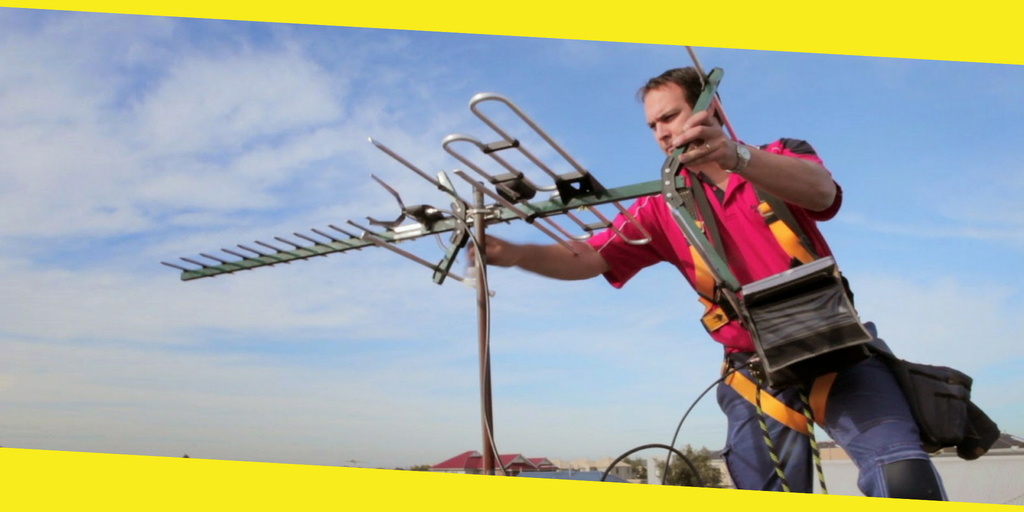How to Get the Most Out of Your Digital TV Antenna
This post was last updated on April 21st, 2020

Installing an antenna is not as easy as you think. You can’t simply place it anywhere and expect to get a clear signal right away. It’s highly recommended that you seek out the expertise of an aerial specialist if you want to get the job done quickly and efficiently.
Having a digital TV antenna allows you to reap the benefits of free television. However, you’ll need to make some adjustments to ensure you get the best value out of your antenna.
Here’s what should be done:
Contents
Toggle1. Have the antenna placed in the right spot.
If it’s an indoor antenna, it should be situated on a window or a wall that faces outdoors. On the other hand, an outdoor antenna needs to be placed on top of your roof and away from obstructions such as buildings and trees. Once they find a good spot, the antenna installer should run the built-in tuner on your TV and let it scan through.
Have you found all the channels you expect to get? If not, try moving your antenna in another place and run the scan again. Remember, the fewer obstructions, the better signal your antenna can get.
2. Have the antenna pointed in the right direction.
If you still have problems receiving a good signal, the antenna installer should point your antenna towards the nearest broadcast towers.
For instance, if the broadcast signal towers in your area are found northeast of your house, then the antenna should be placed on the northeast corner of your home.
Most of the time, pointing your antenna in the right direction makes a huge difference.
3. Be wary of obstructions and remove any that you find.
Have you tried watching a movie at the cinema only to find yourself sitting behind someone who’s blocking your view? If you have, that obscured view you’ve experienced is similar to what happens to TV signals when they encounter obstructions on the way to your antenna.
Obstructions include anything that will hinder the line of sight from a broadcast tower towards your antenna. Buildings, mountains, trees, and even extreme weather conditions can affect your TV reception.
Also, vermin such as rats can gnaw on antenna wires, so they can prevent you from enjoying your TV viewing experience as well. Make sure to schedule regular mice pest control to get these pests out of the way.
4. Have your antenna mounted as high up as you can.
The aerial specialist should mount your antenna to the highest ground possible in your property. You may have to invest in a longer cable, depending on how high you need it to be to get a good reception. If you do decide to get a longer cable, you should be aware that your cable length can also affect the signal quality of your antenna.
Make sure that when you get a longer cable, only get the length that you need. A beefier coaxial cable allows you to have a longer cable without suffering from signal degradation.
5. Add an amplifier to your antenna.
Adding an amplifier can help boost your antenna signal strength so that it can pull in more far-off channels. However, take note that an amplifier can also be disadvantageous to your reception, especially if you are near a transmitter as it increases distortion and noise.
Before you add an amplifier, try scanning first for channels. If the results aren’t what you expect, go ahead and try scanning it again with an amplifier.
Amplifier or pre-amplifier?
If you live in a rural area where broadcast towers may be quite far from your home, you can consider getting a digital antenna that already comes with an amplifier.
A pre-amplifier boosts the signal before it travels through your coaxial cable to ensure that quality is still good once it reaches your TV. You should only use a pre-amplifier when your coaxial cable between your TV and antenna is too long, which degrades the signal.
6. Get a better cable.
Most antennas already come with everything needed for the installation. Often, one cable that is part of the package is an RG-59. However, you may want to consider choosing a more substantial cable, such as an RG-6. It has a better conductor and insulation designed for higher frequencies, which gives you better reception and more channels.
Have you tried placing your antenna in the best position you could find? If you’ve tried all means but still haven’t obtained the quality signal you’re looking for, then you absolutely need the expertise of an aerial specialist. Get in touch with a trusted company so the professionals can do it for you.
Do all you can to take complete advantage of your antenna so that you can get free channels and save on monthly subscription fees.
Recommended For You
13 Samples of Short Dating Profiles – Applicable On Any App
Most Inside
Most Inside offers high-quality recommendations and valuable updates to enhance all aspects of your life, providing premium guidance and enriching experiences.




